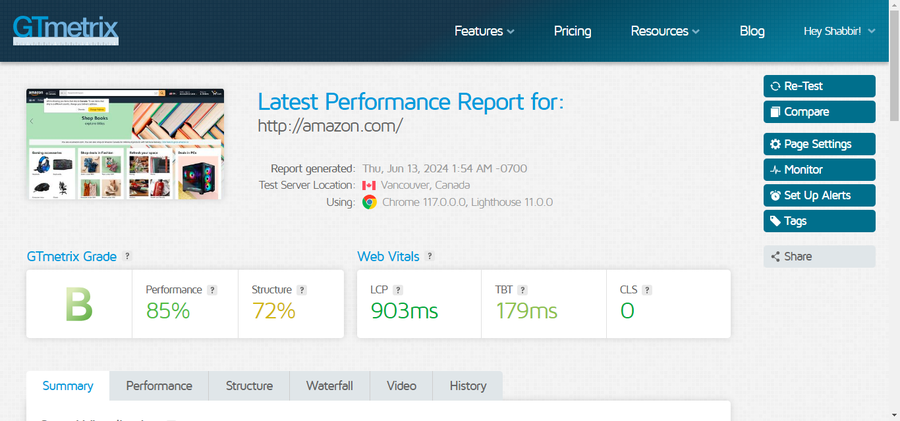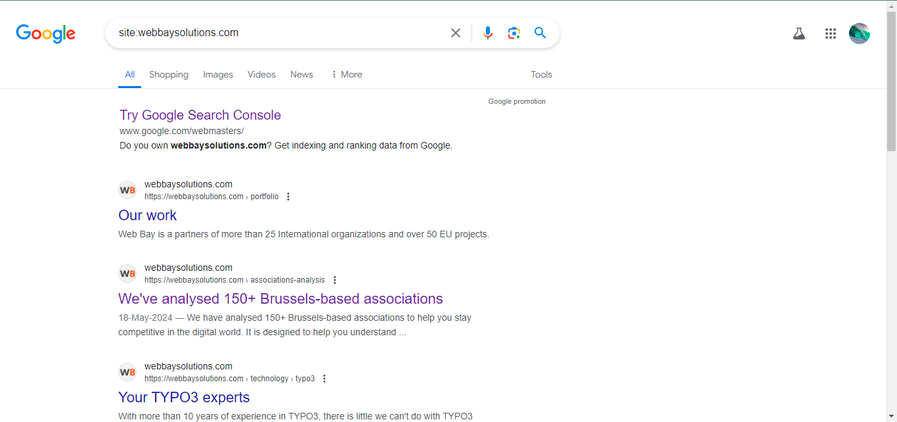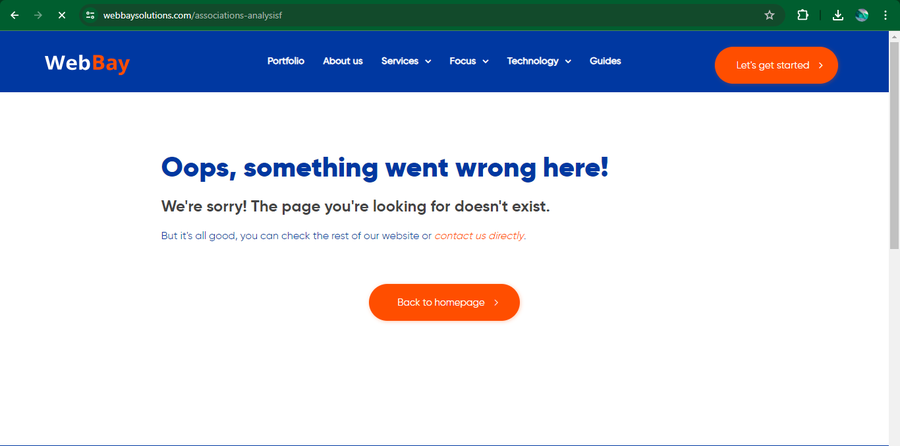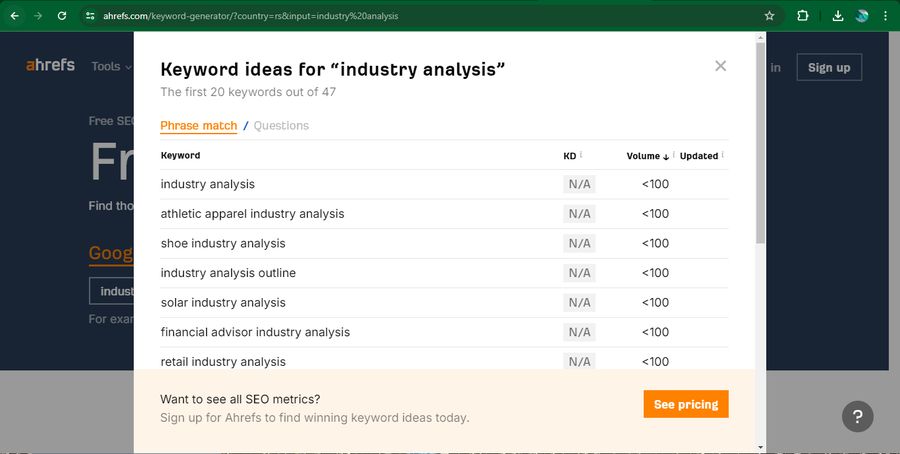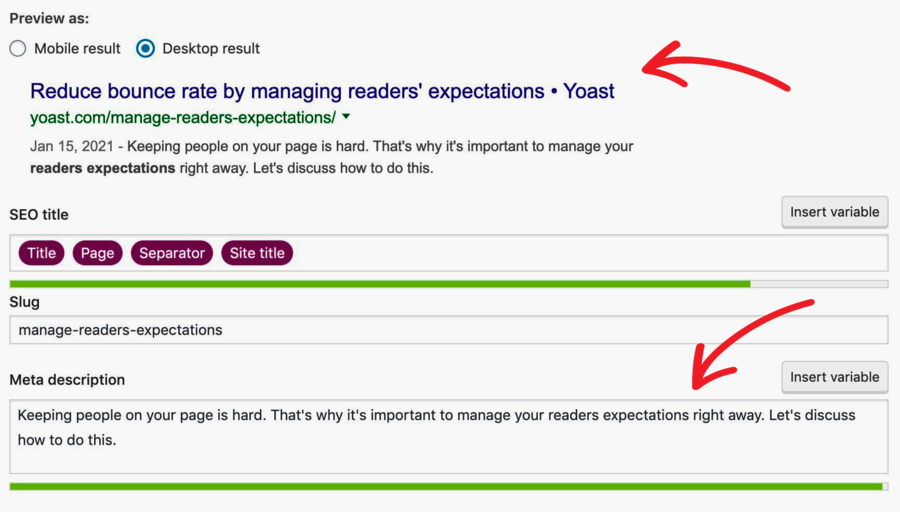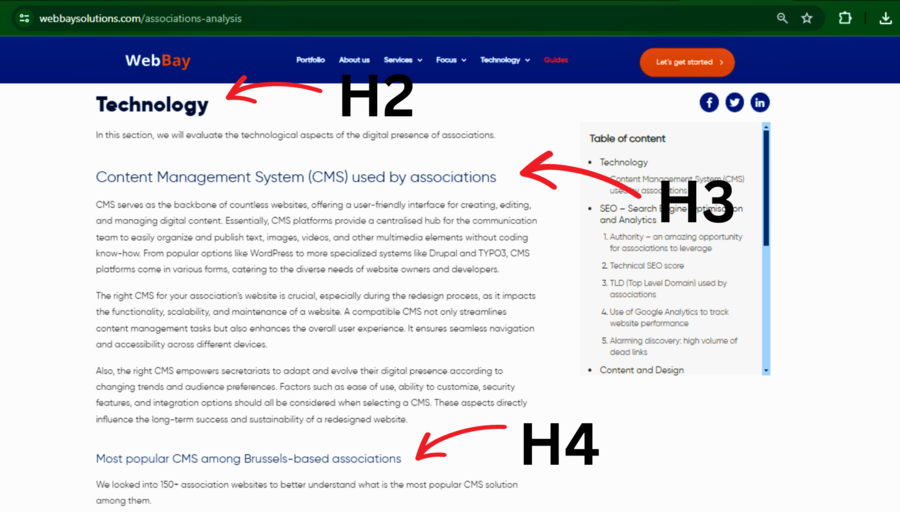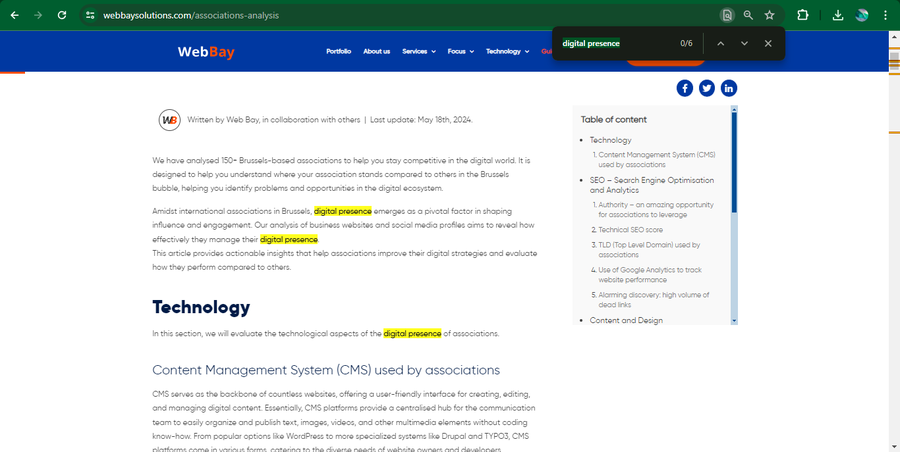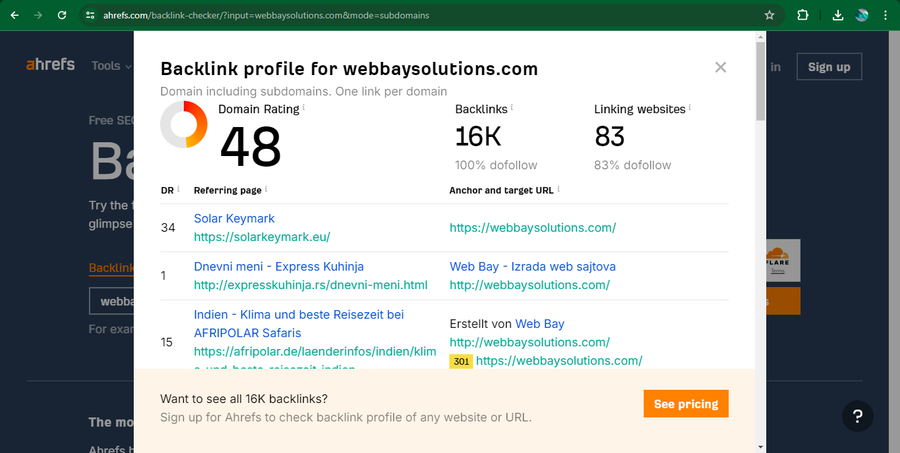SEO for Associations: Actions Communication Teams Can Start Implementing Right Away

![]() Written by Web Bay | Last update:
Written by Web Bay | Last update:
In today’s digital world, people rely on search engines to find information. That’s why search engine optimisation (SEO) is essential for associations. SEO helps your association get noticed by the right people online, those who are interested in your mission and what you have to offer.
We’ve been helping associations improve their online presence through SEO for a long time. We’ve developed successful SEO strategies for various associations and trained their teams, including developers, content creators, and market leaders.
In this article, we’ll give you a detailed breakdown of how various SEO strategies benefit your association and improve its search rankings on the web.
Technical SEO: Your Site’s Backend
Imagine seeing a dramatic improvement in your website’s search ranking, just by making simple technical tweaks to the backend of your website. This isn’t a too good-to-be-true situation. It’s possible with the help of technical SEO.
We have helped numerous clients achieve impressive results through this approach, where we focus on improving their website’s technical health and searchability. Technical SEO is one of the most important factors to get a website to rank since website crawlability and indexability depend on it. Without it, having even the most amazing-looking website with stunning content and design is of no use.
Here’s a closer look at some key areas we examine during a technical SEO assessment process.
Site Speed
Website speed matters a lot and is a major factor when it comes to website rankings. We’ve seen consistently that faster websites tend to rank higher in search results. Search engines prioritise user experience, and a speedy website keeps visitors engaged and happy.
An effective way to track your website’s speed is through core web vitals which is a set of metrics provided by Search Console. These metrics highlight areas where your website might be slowing down.
Spot-on tools are also available to help you analyse your website’s speed, like GT Metrix, Lighthouse, and Similar Web. These tools not only show your website speed but also identify the culprits causing that.
Indexability
As mentioned before, having a good website is of no use if people can’t see it. That’s where indexability comes in. In SEO terms, indexability refers to how easily search engines can find and include your web pages in their search results. Without indexing, search engines can’t find your website. Hence, it won’t show up in search results.
Through our experience in SEO for associations, we’ve identified several common indexability issues that are as below:
XML Sitemap
Think of a sitemap as a map for search engines. It helps them navigate your website’s structure and identify all the important pages you want them to find and index. This is especially crucial for associations with a wealth of resources and publications. A well-structured sitemap ensures that all your valuable content gets properly indexed by search engines, increasing your website’s discoverability.
For optimal results, we recommend submitting your sitemap to search engine consoles like Google Search Console and Bing Webmaster tools. Since Bing is the next popular search engine after Google, associations must focus on it as well.
Robots.txt
A robots.txt file acts as a guide for search engine crawlers, directing them to the most important areas of your website. This helps ensure search engines spend their time indexing the valuable content you want them to find, especially when you have an abundance of web pages.
A robots.txt file helps you optimise your website’s crawl budget. This way, the search engines prioritise indexing the public content that benefits your SEO efforts, while keeping private areas off-limits. As per our research, pairing the robots.txt file with your sitemap is recommended since it provides search engines with a clear roadmap of your website’s structure.
Index and No-Index Pages
Most web pages are searchable by default, meaning search engines can find and include them in search results. In some cases, there might be sections of your association website you don’t want publicly indexed, such as private member areas.
Our SEO approach involves identifying and managing which pages should and shouldn’t be indexed. This helps search engines prioritise the valuable content that you want to be indexed while keeping private pages non-indexed. Special ‘no-index’ tags can be used to mark specific pages so that search engines don’t index them.
Crawl Errors
Crawl errors are roadblocks that website crawlers encounter while navigating your website, preventing access to certain pages. These errors impact your website’s discoverability in search results, as search engines prioritise websites that are easy for them to crawl and understand.
Crawl errors also hinder user experience, as visitors encounter broken links or pages that don’t load properly. Here are the most common crawl errors found on association websites:
404s
Many association websites have extensive resources and news archives built up over time. As content evolves and older pages are removed, it can lead to broken links. 404s are common errors that persist when a user lands on a web page that is no longer available.
We recommend using proper redirects when removing outdated content. Redirects automatically send users to a relevant and helpful page, ensuring they find the information they are looking for rather than an error 404 page.
302s
302s are temporary redirects only for short-term situations that help manage changes on your website and ensure your users reach the right pages without a problem. For permanent changes, using a permanent 301 redirect is the best practice. This ensures a smoother user experience by directing visitors to the correct location. It also transfers the SEO value (link equity) of the old page to the new one, helping in maintaining your website’s search rankings.
Tools such as Small SEO Tools and Moz helps you identify broken links and the errors we mentioned above.
Keyword Research
Keyword research is a critical aspect of SEO, but the approach for associations differs slightly from traditional service-based businesses. While typical businesses might focus on location-specific keywords or product-related terms, associations have a different goal: driving membership and increasing awareness of the association’s value.
That’s why we take a unique approach to keyword research for associations. We move beyond the standard SEO model of location and product focus. Instead, we prioritise keywords that reflect the core interests and needs of your target audience, along with terms that demonstrate a desire to learn more about your association’s benefits.
We have seen significant improvements in search rankings for our association clients, propelling them to the first page of search results for relevant keywords.
Finding the Best Keywords for Associations
If you’re already ranking on search engines, identify the keywords you are ranking for. Analysing your existing search presence helps identify opportunities for further optimisation. Also, explore what questions are currently trending in your field. Understanding what your audience is actively searching for allows you to create content that directly addresses their needs.
Try to incorporate industry-specific keywords into your website’s content and landing pages. These are high-volume keywords that help you connect with potential members who are actively seeking information relevant to your association’s mission.
Lastly, analyse your website to identify areas where you can further optimise existing content using relevant search queries you already rank for. This is a low-hanging fruit that can significantly improve your search ranking for those terms.
There are multiple keyword research tools out there. We recommend using the ones that serve your needs the best and provide you with keywords that really matter to you. Some tools to check out are Ahrefs, Google Keyword Planner, and SEMRush.
On-Page SEO
On-page SEO is essential for improving your website’s ranking in search results. By using these techniques, you create content that is both user-friendly and search engine-optimised. This means that your website will be clear, easy to navigate, and more likely to be seen by potential members. Here is what on-page SEO comprises.
Metadata
From an SEO perspective, metadata boils down to two key elements: meta titles and meta descriptions. These are the snippets users see in their search results, so optimising them is crucial for strong on-page SEO.
Meta Title
Your meta title is like a headline - it should be clear, concise, and accurately reflect the page's content. Including relevant keywords can improve search ranking, while also grabbing the attention of users in search results. The best rule of thumb: keep your titles between 40-60 characters to ensure they display fully in search results.
Meta Description
Meta descriptions are the mini-snippets of your website in search results. They should summarise the page content and entice users to click. Including relevant keywords can improve click-through rate (CTR) and search ranking as well. We recommend keeping meta descriptions concise, ideally between 130 to 160 characters, and using action verbs to encourage users to visit your website.
Content Structure and Heading Tags
A well-organised website structure is crucial for both user experience and SEO. Using heading tags (H1, H2, H3, H4) creates a clear hierarchy for your content, making it easier for users to navigate and find the information they need. Search engines also value clear structure, as it helps them understand the context and importance of your content.
Here’s a breakdown of effective header usage:
- H1: This is your main page title, acting as a headline for your entire content piece. This is used only once on a content page.
- H2: These subheadings highlight key sections within the content.
- H3: Use these for further sub-sections within your H2 areas.
- H4: These are further elaborations of your H3 (used quite rarely).
Note that it is advised to keep your H1 heading tag and page title the same, ensuring consistency and clarity for both the users and search engines.
Body Copy
Your page title and headers set expectations for users, and your body copy needs to deliver on them. This is where you provide valuable and informative content that fulfils those promises. Here are some strategies to enhance your body copy:
Incorporate Keywords Naturally
Include relevant keywords throughout your content, but prioritise readability over keyword stuffing.
Break Up Text with Lists
Lists make information easier to digest and scannable for readers.
Showcase Expertise
Share unique data or insights your association possesses to build trust and establish authority.
Highlight Key Points
Use bolding to emphasise important information for quick reference.
Offer Value
Provide actionable key takeaways, best practices, and pro tips to keep readers engaged and informed.
Some great tools to strengthen your body copy and make sure it’s SEO optimised are Surfer SEO and SE Ranking. Moreover, it is recommended to include target keywords within the first few paragraphs of your content to increase its SEO relevance. But make sure your content flows naturally and keywords aren’t force-fitted.
Off-Page SEO
Off-page SEO focuses on strategies that extend beyond your website itself. It mainly focuses on building trust and authority for your association in the online world. This is achieved through various means, such as earning backlinks from reputable websites within your industry. Since these external validations are difficult to manipulate, they hold significant weight within search engines, ultimately improving your website’s ranking and searchability.
Building Backlinks
The key to earning backlinks is creating valuable and insightful content that others will naturally want to share with their audience. This could include industry reports, unique data analysis, in-depth explorations of emerging trends, or thought leadership pieces. It is your job to seek out relevant industry websites that might be interested in linking content with your association website if you want your backlink building to take a fast-paced approach.
Social Media Presence
While social media presence might not directly drive revenue, studies suggest it can positively influence search engine ranking. This is because active social media profiles can increase brand awareness and engagement, which can be seen as a positive signal by search engines. The golden tip to thrive on any social media platform is posting valuable content consistently and linking your website through it. Your content will eventually lead to increased website traffic and SEO.
Best Content Strategies for Associations to Stand Out
The competition for online attention is fierce, so how can your association rise above the noise? Here are some key strategies:
Know Your Audience
Understanding your target audience’s needs and interests is crucial. Create content that resonates with them and addresses their specific challenges. This is important since it paves stronger connections and loyalty with your association by members.
Be a Thought Leader
Leverage your association’s unique data and expertise to create insightful content that establishes you as an authority in your field. Share industry reports, data analysis, and thought leadership pieces to showcase your knowledge and attract a wider audience.
Keep it Fresh
Regularly update existing content to maintain its relevance and SEO effectiveness. This ensures your website offers the most accurate and up-to-date information for visitors and search engines.
Actionable Content
Motivate your audience with clear calls to action. User action verbs like “learn”, “discover”, and “explore” to encourage reader engagement and learning.
Embrace New Trends
Be a trendsetter by exploring and discussing emerging topics that demonstrate your association’s forward-thinking approach and position you as a leader within your industry.
Bottom Line
SEO for associations is a continuous journey. By implementing these strategies, you can significantly improve your online presence, attract new members, and achieve your digital marketing goals. If you’re looking to improve the discoverability and SEO of your website, contact Web Bay as we provide you with the best website design and optimisation services to elevate your website’s reach among your stakeholders through SEO.
We would like to hear from you
What’s your #1 takeaway from this article?
Or maybe you have a question?
Either way feel free to share it through the form below.
What’s your #1 takeaway from this article?
Or maybe you have a question?
Either way feel free to share it through the form below.

